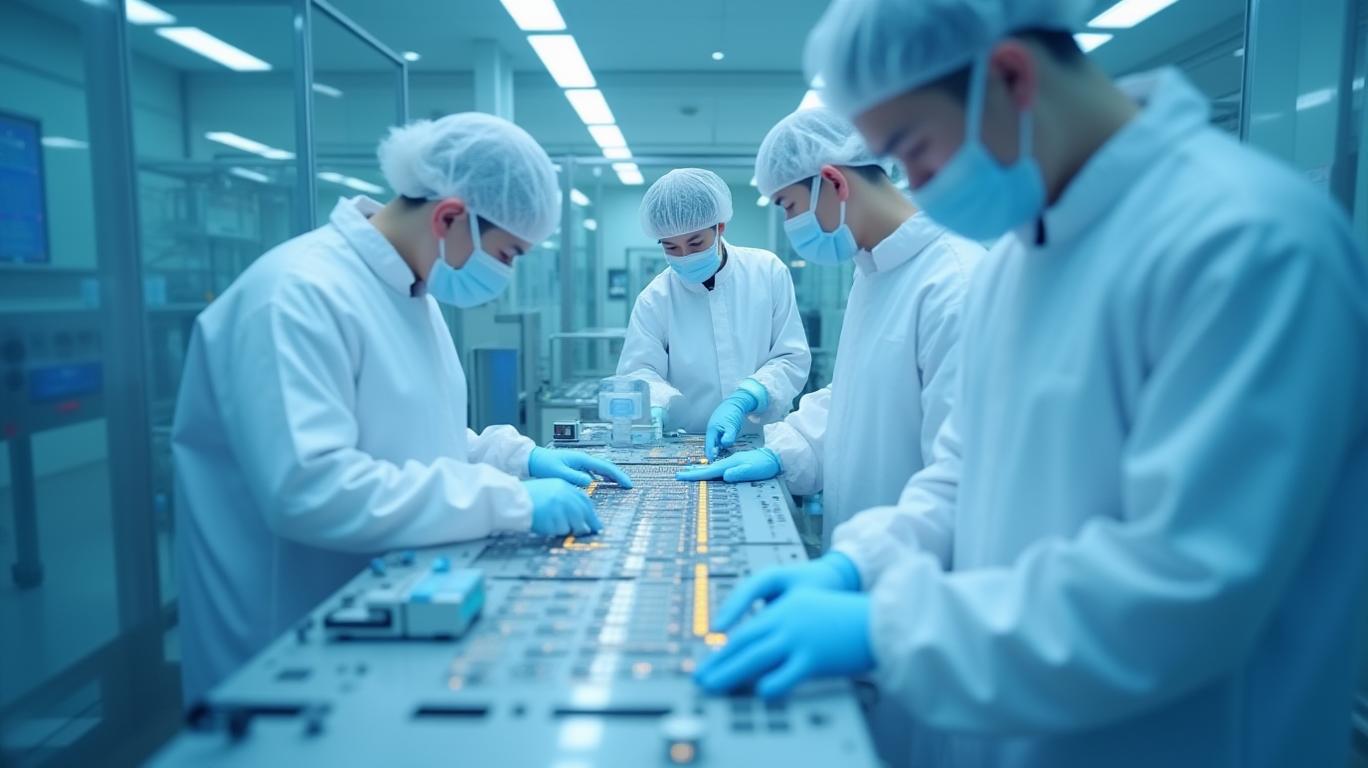TSMC: The AI Semiconductor Leader Poised for Explosive Growth
The semiconductor industry is undergoing a seismic shift, driven by the exponential rise of AI and high-performance computing (HPC) workloads. At the epicenter of this transformation is Taiwan Semiconductor Manufacturing Company (TSM), whose Q1 2025 earnings and strategic moves underscore its dominance in advanced chip manufacturing. With AI infrastructure spending expected to hit $100 billion by 2026 (per Gartner), TSMC's leading node technology, margin resilience, and client wins position it to capture long-term, outsized growth.
Q1 2025: A Quarter of Unstoppable Momentum
TSMC's Q1 2025 results were a masterclass in execution, defying headwinds like the January earthquake in Taiwan and macroeconomic softness. Key takeaways:
- Revenue: $25.5 billion, up 35% YoY, with HPC demand accounting for 59% of sales (up from 56% in Q4). AI-driven Blackwell GPUs from NVIDIA alone contributed significantly to the 3nm process's 22% wafer revenue share.
- Margin Resilience: Gross margins held steady at 58.8%, despite $161 million in earthquake-related losses and margin dilution from overseas facilities. Management reaffirmed its long-term 53%+ gross margin target, even as tariffs and global expansions add near-term pressure.
- HPC as the Growth Engine: The HPC segment is now a $60 billion annualized business, with AI chips fueling 7% sequential growth in Q1.

Analysts Are Bullish, and for Good Reason
The analyst community has rallied behind TSMC's thesis, with upgrades and price targets reflecting confidence in its AI-driven moat:
- Needham: Reiterated Buy, $225 price target (48% upside), citing TSMC's “unmatched scale and technology leadership” in advanced nodes.
- Barclays: Maintained Overweight, $255 price target (68% upside), emphasizing TSMC's “best-in-class risk management” amid geopolitical risks.
- Morgan Stanley: Raised its price target to NT$1,288, noting that AI demand could push 2025 revenue growth to the high end of its 25%+ guidance.
Supply Chain & Client Wins: TSMC's Fortress
TSMC's global footprint and technology roadmap are designed to lock in AI demand for years:
1. Advanced Nodes:
- 3nm (N3): 22% of wafer revenue in Q1, with Blackwell GPUs driving adoption.
- 2nm (N2): Volume production begins in H2 2025, targeting AI chips for 2026.
- CoWoS Packaging: Capacity to double in 2025, easing supply constraints for HPC clients like NVIDIA and AMD.
- Geopolitical Proof Points:
- U.S. Expansion: TSMC's $100B+ investment in Arizona (three new fabs, R&D hubs) secures U.S. government support and insulates it from trade wars.
Japan & Taiwan: Kumamoto's first fab is now in volume production, while Taiwan's 11 new fabs will ensure leadership in 2nm and beyond.
Client Wins:
- NVIDIA: Blackwell GPUs and future AI chips rely on TSMC's 3nm and CoWoS.
- AMD/Qualcomm: HPC partnerships are driving TSMC's 5nm and 7nm demand.
Why Act Now? The H2 2025 Catalysts Are Clear
Investors should move quickly for two reasons:
1. Demand Recovery: The AI chip shortage is not easing—NVIDIA's Blackwell GPUs are backlogged, and TSMC's 2nm capacity will only exacerbate this. By H2 2025, TSMC's revenue guidance of mid-20s growth may be conservative.
2. Margin Stability: While overseas facilities and tariffs may cause 2-3% margin dilution, TSMC's scale and pricing power will offset these costs. Its $38B-42B 2025 CapEx is focused on advanced nodes, ensuring it stays ahead of competitors like Samsung.
Final Call: TSMC Is the AI Semiconductor Play
With AI spending accelerating, HPC demand surging, and TSMC's unmatched technology lead, the case for TSM stock is undeniable. Analysts' average price target of $223.69 (versus today's ~$192) suggests 16% upside, but the true opportunity lies in TSMC's decade-long AI tailwinds.
Investors should allocate now—before H2's demand recovery and N2 production ramps fuel a multi-year growth cycle. TSMC isn't just a semiconductor company; it's the infrastructure backbone of the AI revolution.
JR Research's analysis is based on public data and does not constitute financial advice. Readers should conduct their own due diligence.

Comments
No comments yet